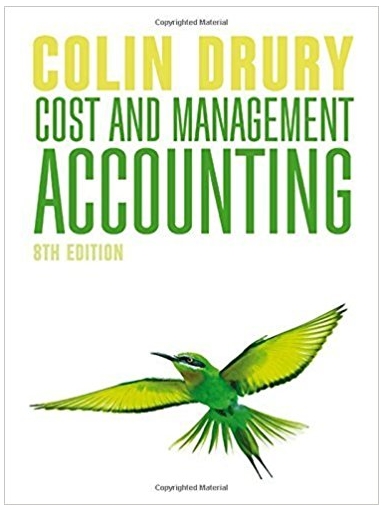Question:
The accountant of Minerva Ltd, a small company manufacturing only one product, wishes to decide how to present the company's monthly management accounts. To date, only actual information has been presented on an historic cost basis, with
stocks valued at average cost. Standard costs have now been derived for the costs of production. The practical capacity (also known as full capacity) for annual production is 160 000 units, and this has been used as the basis for the allocation of production overheads. Selling and administration fixed overheads have been allocated assuming all 160 000 units are sold. The expected production capacity for 2013 is 140 000 units. It is anticipated now that, for the 12 months to 31 December 2013, production and sales volume will equal 120 000 units, compared to the forecast sales and production volumes of 140 000 units. The standard cost and standard profit per unit based on practical capacity is:
The accountant has prepared the following three drafts (see below) of Minerva Ltd's profit and loss account for the month of November 2012 using three different accounting methods. The drafts are based on data relating to production, sales and stock for November 2012 which are given below.
The accountant is trying to choose the best method of presenting the financial information to the directors. The present method is shown under the Actual costs column; the two other methods are based on the standard costs derived above.
The following estimated figures for the month of December 2012 have just come to hand:
Draft profit and loss accounts for the month ended 30 November 2012
Requirements:
(a) Prepare a schedule explaining the main difference(s) between the net profit figures for November 2012 under the three different allocation methods.
(b) Discuss the relative merits of the two suggested alternative methods as a means of providing
useful information to the company's senior management.
(c) Draw up a short report for senior management presenting your recommendations for the choice of method of preparing the monthly accounts, incorporating in your report the profit and loss account for November and the projected profit and loss account for December 2012 as examples of your recommendations.
Stocks
Stocks or shares are generally equity instruments that provide the largest source of raising funds in any public or private listed company's. The instruments are issued on a stock exchange from where a large number of general public who are willing...
Transcribed Image Text:
(f per unit) per unit) Selling price Production costs: 25.00 Variable Fixed 8.00 6.00 14.00 Variable selling costs 1.00 15.00 10.00 Other fixed costs Administration Selling 2.10 3.30 6.70 Standard profit per unit Production and sales quantities November 2012 (units) Opening stock Production 20000 8000 28000 10000 18000 Less Sales Closing stock Sales 12000 units at £25 Production costs: Production 14000 units Administration costs 24 500 Selling costs: variable £116 000 fixed £90 00p variable £12000 fixed £15000 Absorption cost method £000) (£000) (£000) (£000) (£000) (£000) Varia bie cost Actual costs Sales (10000 units at £25) 250 250 250 160 64 224 Opening stock Production costs: 280 variable fixed 406 261 145 252 140 144 80 392 Closing stock 105 110 170 Variable selling costs Gross profit/ 105 110 160 contribution Other expenses Production-fixed Administration fixed 23 Selling 21 28 variable 10 14 48 12 43 16 124 36 57 67 Variances Production variable - expenditure - expenditure -volume fixed- volume 32 (14) (14) Administration - expenditure Selling variable - expenditure fixed -volume 4. (2) (2) (24) 19 48 - expenditure - Net profit 57 Sum of variable and fixed costs.
-1.png)
-2.png)
-3.png)
-4.png)






